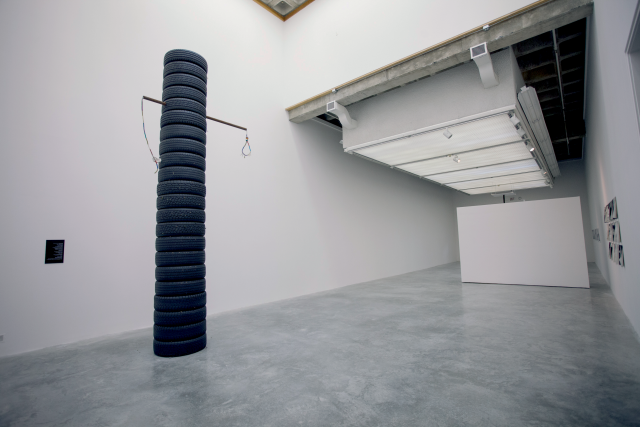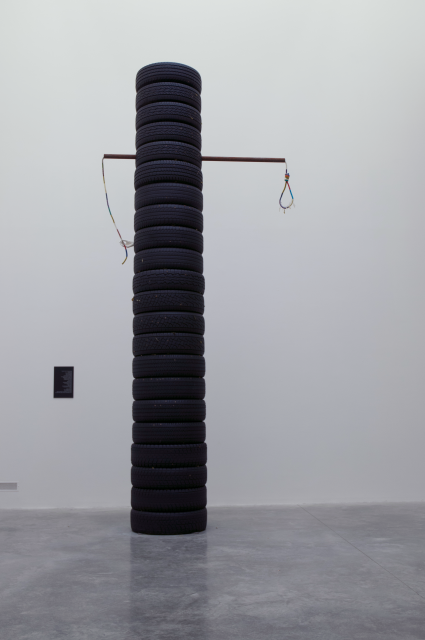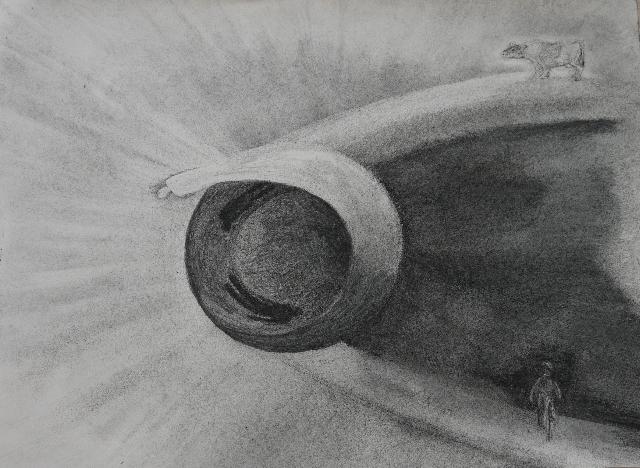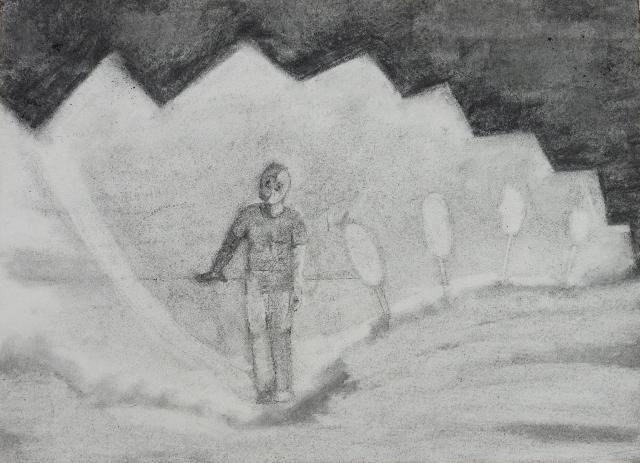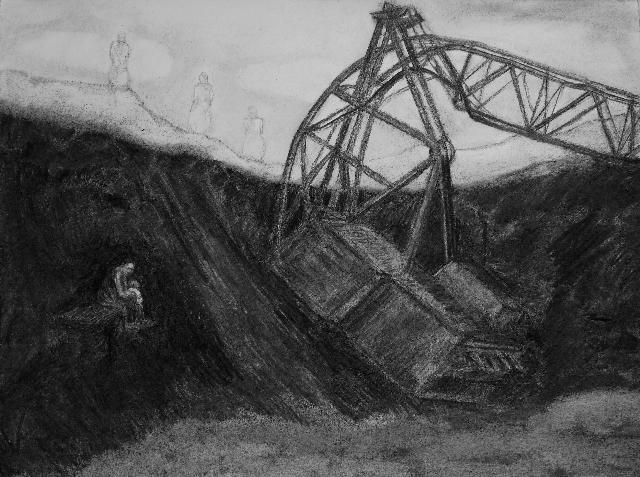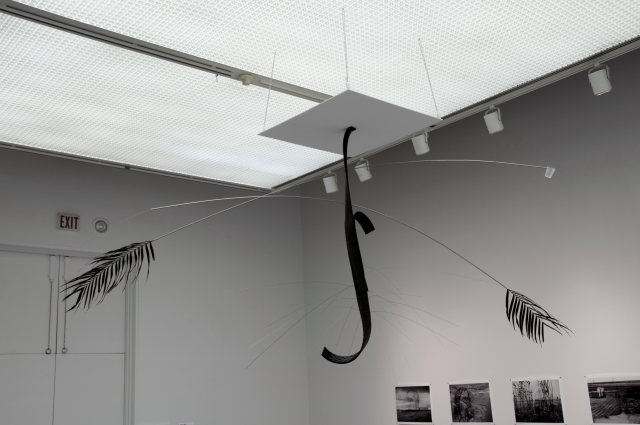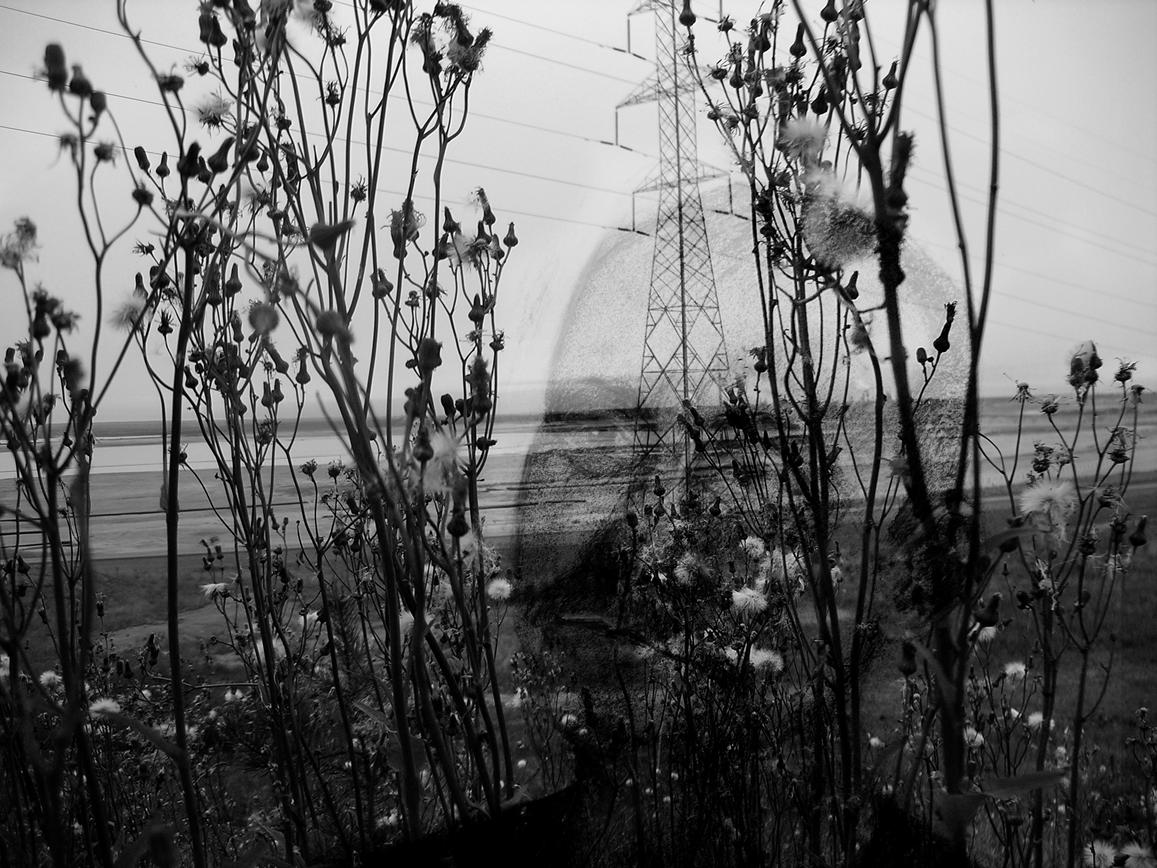
Exhibition
26 Sep 2013 - 26 Oct 2013
Illingworth Kerr GalleryOil Sand
Susan Turcot
“With the support of a Canada Council for the Arts grant and the Illingworth Kerr Gallery I made two trips to the Athabasca region of Northern Alberta between 2009 and 2012. On my second trip I spent a lot of time in a camp for oil sands workers drawing their portraits and having powerful one-to-one exchanges about their work and life.
I work mainly with drawing and have often used this medium to describe, translate, and question my experience in a natural resources extraction landscape. The forest commonly represents feelings of connectedness, home, being grounded and alive. On the other hand, a mined area tends to be vacant, fragmented, dry, sometimes toxic and ghost-like with the memory of all that has lived there. What remains is isolated, vulnerable, not attached, or connected.
This contrast has a direct parallel in our psychological and emotional experience. As humans we can feel attached, healthy, connected to the supportive ecologies we grow from. Likewise we can feel invisible, not grounded, isolated, uprooted and at a loss for place. These themes run through most of my work: I am searching to depict the fragile places within us from a personal, political, and sociological perspective.” Susan Turcot
Based in London and Kamouraska, Québec, Susan Turcot’s most recent research and artistic production address environmental issues specific to the Alberta oil sands. Her work has been affected significantly however in her struggle to identify the most poetic forms of visual representation of the disruptive, insatiable Alberta oil sands industry.
The exhibition presents several bodies of recent work by Turcot. Hide and Seek (For Two Grand a Week) (2012) comprises 18 charcoal drawings. The term “Hide and Seek” is used by tradesmen in Northern Alberta to describe working at an oil plant. The drawings are based on elements from the life stories of twenty-four workers who spoke to Turcot while she drew their portraits at an oil sands camp. The sentiment that emerges from the workers’ stories is a shared sense of placelessness mixed with a need for escapism. The high wages paid to workers are undermined by the loneliness they feel in an inhumane environment. Seeking the Human in an Inhumane Environment (2013) is series of ten black and white photographs of the oil sands region and landscape that are montaged with drawn portraits of oil sands workers.
Two sculptures are included in the exhibition. Slavery? (2010) is a two-armed mobile comprised of the enmeshed rubber of a car tire, delicate steel rods, and found palm fronds painted black. The sculpture becomes a visual cue for a meditation on the ravaged landscapes and social turmoil associated with all extraction-based economies. The second sculpture, produced in residence at the IKG, is entitled plant, settle, sow (2013). A towering stack of discarded car tires, plant, settle, sow echoes the hangman’s game where saving the man becomes (im)possible. “The hangman,” writes Turcot, “is unsupported; he is not grounded. In fact, the ground below him has disappeared. Metaphorically there is a lot at stake for humanity if the ecological community is not able to sustain it.”
Turcot’s drawings and sculptures give form to her research projects, as a type of reportage on the nature/culture divide and its various forms of representation driven into increasingly abstract forms. Turcot claims the exploitation of natural resources alters the environment in myriad ways, often eliciting a negative and irreversible impact that is increasingly difficult to comprehend. As an artist she feels compelled by empathy and morality to follow such organized human activities as they continue to impact upon and reshape the surface of the planet.

